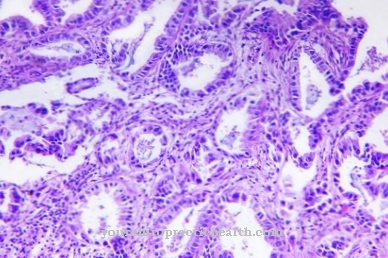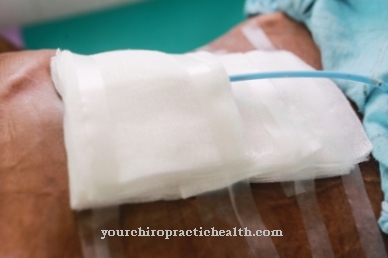Sometimes fluid or air can build up in the lungs, making it difficult to breathe and affect the heart. In these cases your health is at risk and it has to be Pleural drainage to relieve the lungs.
What is pleural drainage?

Drainage should basically drain air or fluid accumulations through a hose from the body into a container that collects the fluid. It is often placed after an operation to drain wound water and to keep the risk of infection in the wound area low.
A pleural drain moves air or fluid from the lungs out of the chest to relieve the lungs and make breathing easier. Due to various circumstances, air and fluid can accumulate in the lungs, which pose an acute health risk. In these cases, a tube is inserted into the pleural space between the pleura and the pleura to relieve the lungs. The pleural drainage is also known as a chest drainage.
Function, effect & goals
A pleural or thoracic drainage is always necessary when air, blood or pus accumulates in the pleural space and the lungs no longer have enough space to develop, resulting in severe shortness of breath. If fluid accumulates there, the arteries and veins that lead to the heart can no longer supply the heart with sufficient blood. The accumulation of fluid or air creates pressure in the lungs, which can be life-threatening, but can be removed by a pleural drainage.
Some clinical pictures make a chest drain necessary, e.g. B. Pneumothorax and Tension Pneumothorax. If the ribs are injured or the chest is opened during an operation, air can enter the pleural space and cause symptoms such as pain, shortness of breath and a racing heart. If air penetrates the pleural area when you inhale it, but it cannot be exhaled normally again, a life-threatening situation occurs because the pressure can rise so much that the heart is no longer able to perform its full function. In the hemothorax, blood can build up in the lungs due to injury to the blood vessels. If this situation lasts for a long time, it not only causes pain and shortness of breath, but also blood loss.
In this life-threatening situation, pleural drainage can be a life-saving measure. In particularly severe cases, surgery is often required in addition to placing the drainage. In pleural empyema, pus accumulates in the pleural space, in most cases from infections in the chest area from pneumonia or surgery. In this case, in addition to draining the pus, it is necessary to rinse the chest with a saline solution. There are several different procedures for a chest tube.
The most common are the Monaldi drainage, which is primarily used for air retention, and the Bülau drainage, which is used for fluid retention. The drainage systems can u. a. differ in the number of collecting containers. A pleural drainage must be placed sterile. After the skin has been disinfected, the ribs are palpated and a puncture site is marked in the middle of the back. An incision of approx. 1 cm is made there, through which the drainage is introduced.
Risks, side effects & dangers
A pleural or chest tube is one of the most important life-saving measures, but it is not without its risks. Even if serious complications rarely occur, the procedure can injure the lungs and lead to a pneumothorax as a complication. In order to be able to position the tube correctly, it is necessary to open the pleural space and the rib muscles in the right place in the area of the back.
At the bottom of each rib there is an artery and nerve that can be injured by this procedure, especially if it is time-pressed due to a life-threatening condition. Such an injury can lead to bleeding and, in more difficult cases, abnormal sensations such as numbness if a nerve has been injured. The risk of injuring body tissue in the adjacent area through the laying of the drainage cannot be excluded. If the heart, windpipe or main artery is injured, life-threatening complications can occur. If pleural drainage is not possible without discomfort, in most cases doctors will choose emergency surgery.
The wound itself, which is caused by the laying of the drainage, is also a risk because pathogens can collect there and trigger an infection. A doctor should always be consulted if there is redness, swelling at the injection site, shortness of breath or a racing heart, as well as if large amounts of fluid are secreted, as this can be an indication of further bleeding. However, when there is a life threatening situation, the benefits outweigh the disadvantages. When placing a chest tube, the patient must be careful not to pull the tube so that it does not slip out before removal.
Pain may occur when pulling the tube, but this can be eliminated by administering a local anesthetic. The hygienic requirements play an important role in avoiding unnecessary risks. In order to keep the risk of infection low, the procedure must be performed under sterile conditions.






.jpg)





.jpg)



.jpg)










.jpg)
